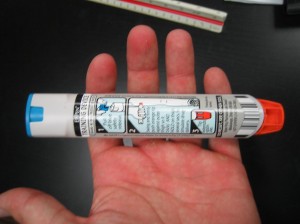How often do kids get heart attacks?
While the statistics for heart disease and cardiac arrest in the US is very high, majority of the cases are adults. However, that doesn’t mean that children don’t make up a portion of that statistic. Compared to adults who get heart attacks because of lifestyle-related cardiac problems, children get heart attacks because of respiratory problems or congenital heart conditions. When CPR for adults and children function using the same principles, there are still big differences between the two. Compression depth is different when given to children of different ages, as well as priority (chest compressions versus ventilation).
Congenital cardiac conditions in children

One of the biggest factors that cause cardiac arrests and respiratory problems in children is congenital heart disease. CHD affects 1 percent of total births in a year; that’s 40,000 babies each year being born with cardiac conditions. Studies have shown that the prevalence of CHDs, mostly mild types, has been increasing, the most common being VSD (ventricular septal defect).
VSDs are characterized by a malformation in the wall that separates the two ventricles, mixing oxygenated and unoxygenated blood. This is dangerous if the shunt allows blood from the right side of the heart to the left, because the unoxygenated blood mixes with the oxygenated blood that is sent to the systemic circulation.
How does CHD cause cardiac arrest?
CHD usually manifests respiratory symptoms as the child’s condition worsens. Symptoms usually become noticable when the child becomes more active, usually when they become toddlers (the terrible twos!). Before of the CHD, the heart works harder and the resulting respiratory symptoms also add to the stress the heart is receiving. Cardiac arrest happens usually after the child experiences respiratory failure.
What can we do once the heart attack happens?
Whether you are in or out of the hospital, CPR is the first thing that should be done. In a medical set up, there are medications and equipment that is used adjunct to CPR but out on the street, simply giving chest compressions and ventilations is enough. When you study Pediatric Advanced Life Support, you will learn how to properly perform core CPR skills, including defibrillation. This skill is done with an AED – automated external defibrillator – a machine that sends electricity to the heart. Electricity is mean to return the heart to its regular rhythm.
Get Pediatric Advanced Life Support training today.
PALS training covers a variety of topics and skills in its two-day program. It runs for a total of 14 hours, with a re-certification class available that runs for 6 to 8 hours. The program will include:
- Compression depth and techniques for infants and toddlers
- Ventilatory techniques (mouth-to-mouth, with barrier device, and bag valve mask)
- Defibrillation levels for children
- Pediatric dosages for medication
- Pediatric equipment (oxygen support devices, ECGs)
